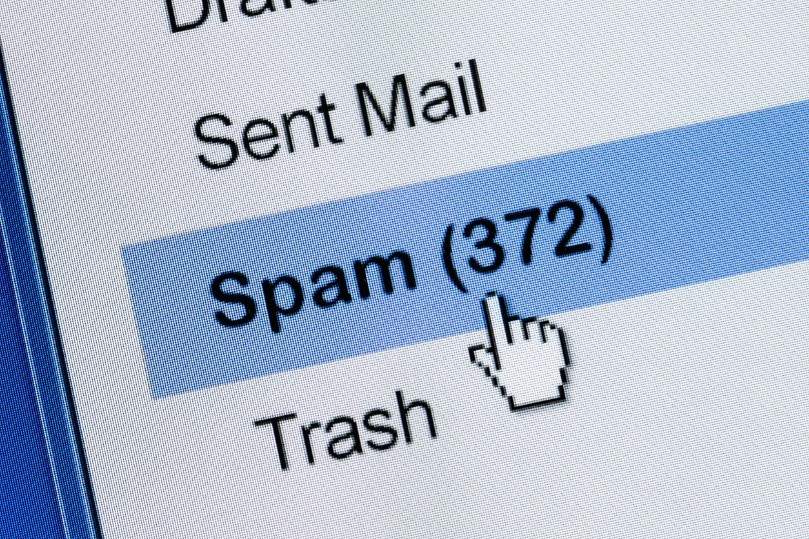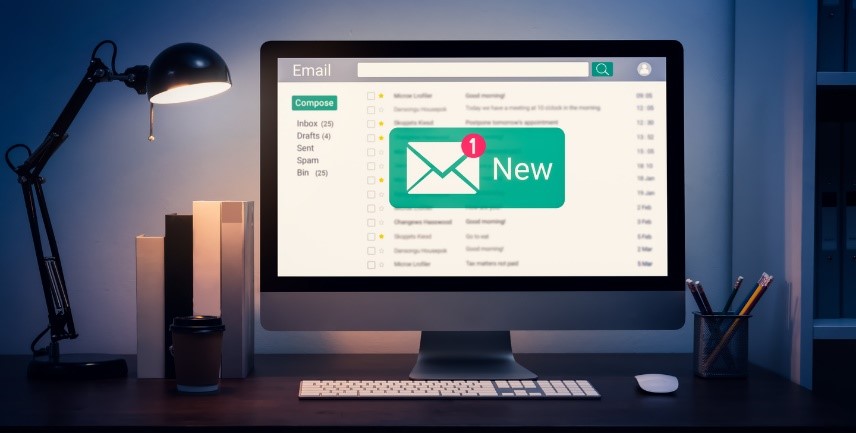Email marketing has come a long way since the first email was sent way back in 1971. Over the years, it has evolved into a sophisticated marketing tool that allows businesses to reach their target audience in a cost-effective and personalised way, and as a leading content marketing agency, this fascinates us.

So, in this blog, we will take a closer look at the evolution of email marketing, from its early beginnings to its current state, and explore how it has transformed how businesses connect with their customers. Whether you are an experienced email marketer or just starting, we hope to provide valuable insights and inspiration for taking your email marketing efforts to the next level.
The History of Email Marketing
Email marketing has a long and fascinating history, dating back to the early days of the internet. The first email was sent in 1971 by computer engineer Ray Tomlinson, who used the @ symbol to separate the user from the destination address. However, it wasn’t until the 1990s that email started to be used for marketing purposes, and this is where it really started to get interesting.
In the early days of email marketing, businesses would simply send out mass emails to anyone on their email list, often without permission, hoping to get some conversions. Unsurprisingly with what we know now, this approach was ineffective and annoyed many recipients who viewed these emails as spam. In response to the growing spam problem, email providers began introducing filters and other measures to block these messages.
Despite these challenges, email marketing continued to evolve and improve over the years. In the 2000s, the rise of email service providers (ESPs) like Mailchimp and Klaviyo made it easier for businesses to build and send targeted email campaigns.
Here at SQ Digital, we utilise both of these ESPs to help us create effective email marketing campaigns for our clients. This is because they have an abundance of features such as segmentation, automation, and tracking, allowing our email marketing experts to tailor messages to specific audiences and measure the effectiveness of our campaigns.
In recent years, email marketing has continued to evolve with the introduction of new technologies such as artificial intelligence, personalisation, and mobile optimisation, which we will delve into later on.
The Impact of Mobiles on Email Marketing
With the increasing popularity of smartphones and tablets, more and more people are accessing their email on mobile devices, leading to a shift in how marketers such as ourselves approach email campaigns.
For example, one of the biggest impacts of mobiles on email marketing is the need for responsive design. Emails not optimised for mobile devices may appear distorted or difficult to read, leading to lower engagement and conversion rates. Therefore, it has become essential for email marketers to design their emails with mobile devices in mind, ensuring that they are easy to read and navigate on smaller screens.
The Role of Personalisation in Email Marketing
Following on from the above, mobile devices have also enabled marketers to create more personalised and targeted email campaigns. With the ability to track user behaviour and gather data on mobile devices, marketers can create customised messages tailored to each user’s interests and preferences. This makes each email much more relevant and engaging for the subscribers, leading to improved open rates, click-through rates, and those all-important conversion rates.
Regardless of the device that an email is optimised for, several features will allow you to personalise the message being sent. For example, subject lines. This is the first thing a recipient sees in their inbox or notification on their mobile, which means it has a crucial impact on whether or not an email is opened. By personalising subject lines with the recipient’s name or other relevant information, businesses can increase the chances that their emails will be opened.
In addition, personalised send times have also changed the way that marketers such as ourselves set up and use email campaigns. Whether it’s through the recipient’s time zone or past behaviour (such as when they usually open or engage with emails), you can increase the chances of your email being opened and read.
Interactive Elements of Email Marketing and Their Importance
When talking about interactive elements in email marketing, we mean the features that allow the recipient to engage with the email content beyond just reading it. For example, clickable buttons, menus, images, videos, quizzes, polls, and more.
This type of email marketing has become increasingly popular in recent years as businesses seek new ways to engage with their customers and make their email campaigns more effective. By having interactive elements in an email, you can almost guarantee that the click rate will increase as more features can be clicked. In addition, they also help improve user experience by making an email more dynamic and visually appealing, allowing your emails to stand out in a long list of boring, non-clickable content in a recipient’s inbox.
The Future of Email Marketing
The digital marketing industry is constantly changing because many elements, such as email marketing, are shaped by emerging trends in technology and consumer behaviour. Here at SQ Digital, we couldn’t be more excited to see how this marketing tool has changed over the years, considering how much it has evolved since its humble beginnings.
For example, we believe that automation will play a significant role in the future of email marketing. Email automation is becoming increasingly popular, allowing businesses to send triggered emails based on specific user actions or behaviours. In the future, we can expect to see even more automation, with increased machine learning algorithms to optimise email campaigns in real-time automatically.
We also think that current trends, such as personalisation, will continue to evolve and have a huge role in how the industry changes. By learning more about how to use data and embracing new technology such as artificial intelligence (AI), businesses can create even more personalised and relevant email campaigns for subscribers.
As a leading content marketing agency in Lancaster, we are fascinated by the constant evolution of email marketing and are excited by what the future holds. Our industry is so rapidly changing, but we’re always open to change and embracing the future, which is one of the key reasons we’ve been in business for over 20 years.
If you want to learn more about our content creation services and how we can help to improve your email marketing campaigns, please get in touch, and a member of our team will be more than happy to help.


